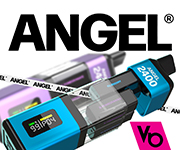K
KulrMeStoopid
Guest
http://www.independent.com.mt/news.asp?newsitemid=151574
<tbody>
</tbody>
<tbody>
</tbody>
| by Annaliza Borg Article published on 04 October 2012 |
| <iframe src="http://www.facebook.com/plugins/like.php?app_id=217242764972158&href=http%3A%2F%2Fwww.independent.com.mt%2Fnews.asp%3Fnewsitemid%3D151574;send=false&layout=button_count&width=450&show_faces=false&action=like&colorscheme=light&font&height=30" scrolling="no" frameborder="0" allowtransparency="true"></iframe> |
<tbody>
</tbody>
| E-cigarettes and e-liquids fall under the Tobacco (Smoking) Control Act (Legal notice 22 of 2010) and the Product Safety Act, meaning they cannot be smoked indoors. They must also be appropriately labelled and disposed of according to laws and regulations. In a statement yesterday, the Malta Competition and Consumer Affairs Authority (MCCAA) pointed out: “In Malta the e-cigarettes and e-liquids fall under the Tobacco (Smoking) Control Act (Legal notice 22 of 2010) and the Product Safety Act, without prejudice to other legislation”. These two laws cover the labelling (relating to pictures of the effects of smoking and health warnings) and where such products can be smoked. This statement listing guidelines follows a warning issued by the Environmental Health Directorate on advertisements featuring the electronic cigarette, saying that although products and smoking devices (simulating cigarettes or tobacco) such as electronic cigarettes are not illegal, their advertising and use is regulated by a legal notice (LN 22 of 2010). Contrary to what some marketers of the electronic cigarette imply in their advertisements, the World Health Organisation (Who) does not consider it to be a legitimate therapy for smokers trying to quit. The Environmental Health Directorate said electronic cigarette advertisements are on the increase and “this advertising and the claims made go contrary to established legislation.” The legal notice in question makes it clear that electronic cigarettes are considered to be tobacco products with respect to advertising and their use in public places. In fact there has since been reports of people who have been fined for smoking indoors. Following this warning, carried in The Malta independent on 21 June (Electronic cigarettes not considered legitimate therapy to quit smoking), the Electronic Cigarette Industry Trade Association (Ecita) which has been seeking to dispel myths associated with e-cigarettes, reacted saying that they are a demonstrably safer and healthier alternative to smoking. Ecita (EU) Ltd president Katherine Devlin provided what she said were “scientifically factual responses” to a number of concerns about e-cigarettes. She said that while it is correct to say that e-cigarettes are not ‘quit smoking medication’ and that all such claims in any Maltese advertising are illegal, e-cigarettes are not tobacco products either. In its guidelines, the MCCAA said e-cigarettes cannot be considered as a medical device unless they are used to deliver a medicinal intended to get rid of nicotine addiction, it noted. If a manufacturer decides to market E-cigarette devices and e-liquids as a way to get rid of nicotine addiction, compliance to Directive 2001/83 and Directive 93/42/EEC would be necessary. This would entail presenting data showing the doses of nicotine delivered to the blood etc. The authority went on to point out that most of the e-liquids present on the market, which are used in the electronic cigarette to fill the cigarette’s cartridges, are mixtures containing various concentrations of aromatic substances including, glycerol, propylene-glycol and other substances. Some refills do contain hazardous substances such as nicotine. If a hazardous substance is present in the mixture/preparation, the refilling E-liquid should be classified and labelled according to the appropriate legislation: Dangerous Preparations Directive No.1999/45 (until June 2015) and CLP Regulation No. 1272/2008. The label of the E-liquid shall include the following information: • The name, address and telephone number of the supplier • The nominal quantity of a substance or mixture in the packages made available to the general public (unless this quantity is specified elsewhere on the package) • Product identifiers – chemical name and identification no. (e.g. CAS, EC) • Where applicable, hazard pictograms, signal words, risk phrases (hazard statements), safety phrases (precautionary statements) and supplemental information required by other legislation. In addition, most of the e-cigarettes contain a lithium-ion rechargeable battery; according to the Batteries and Accumulators Regulations, 2007 (Legal Notice 311 of 2007), accumulators and battery packs shall be appropriately marked with the symbol indicating “separate collection” for all batteries, accumulators and battery packs - the crossed-out wheeled bin. In addition to this symbol, if the batteries, accumulators and button cells contain more than a given amount of these metals - 0.0005 % mercury (Hg), 0.002 % cadmium (Cd) and 0.004 % lead (Pb) - the crossed-out wheeled bin should be accompanied by a chemical symbol (Hg, Cd, Pb). In other words, the chemical symbol always accompanies the crossed-out wheeled bin, never as a stand-alone label. Due to the electronic component of the e-cigarette, the CE mark should be displayed on the product part/s, where applicable. A complete Declaration of Conformity (DoC) containing the elements according to applicable Directives is also demanded. The manufacturer needs to be aware of the content stated on the DoC. |
<tbody>
</tbody>
Last edited:
















